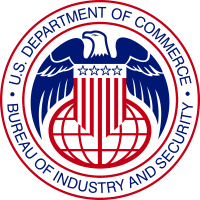How will Export Control Reform (ECR) Affect the Firearms Industry?
Legislative 5/24/18 1:12 PM Orchid Advisors 1 min read
 The U.S. Departments of State and Commerce have published proposed new "Export Control Reform" rules that, once effective, will transfer export control of semi- and non-automatic firearms, components and related ammunition, including associated technical data, from the International Traffic and Arms Regulations (ITAR) to the Export Administration Regulations (EAR).
The U.S. Departments of State and Commerce have published proposed new "Export Control Reform" rules that, once effective, will transfer export control of semi- and non-automatic firearms, components and related ammunition, including associated technical data, from the International Traffic and Arms Regulations (ITAR) to the Export Administration Regulations (EAR).
Like the ITAR, the EAR control the export of hardware and technology, and require export licenses in many instances. The main difference is that the items controlled by the EAR are used commercially as well as in defense applications (so-called "dual use" items), in contrast to items controlled by the ITAR, which are intended to be items that are solely for military use. Export Control Reform (ECR) is intended to align firearm hardware and technology with that distinction, by moving non-military and dual-use firearms and ammunition from the ITAR to the EAR.
After the new rules become effective, non-automatic and semi-automatic firearms, components, ammunition and certain other items that currently require an ITAR export license will still require an export license in most instances but under the more flexible rules of the EAR. Another key change will be the disappearance for most of the industry of annual $2,250 registration fees to the Directorate of Defense Trade Controls (DDTC) at the U.S. Department of State, as well as the $250 per license fee for ITAR licenses.
The new rules will effect numerous other changes in the export control regime that currently applies to the firearms and ammunition industry. Read more about the changes here.